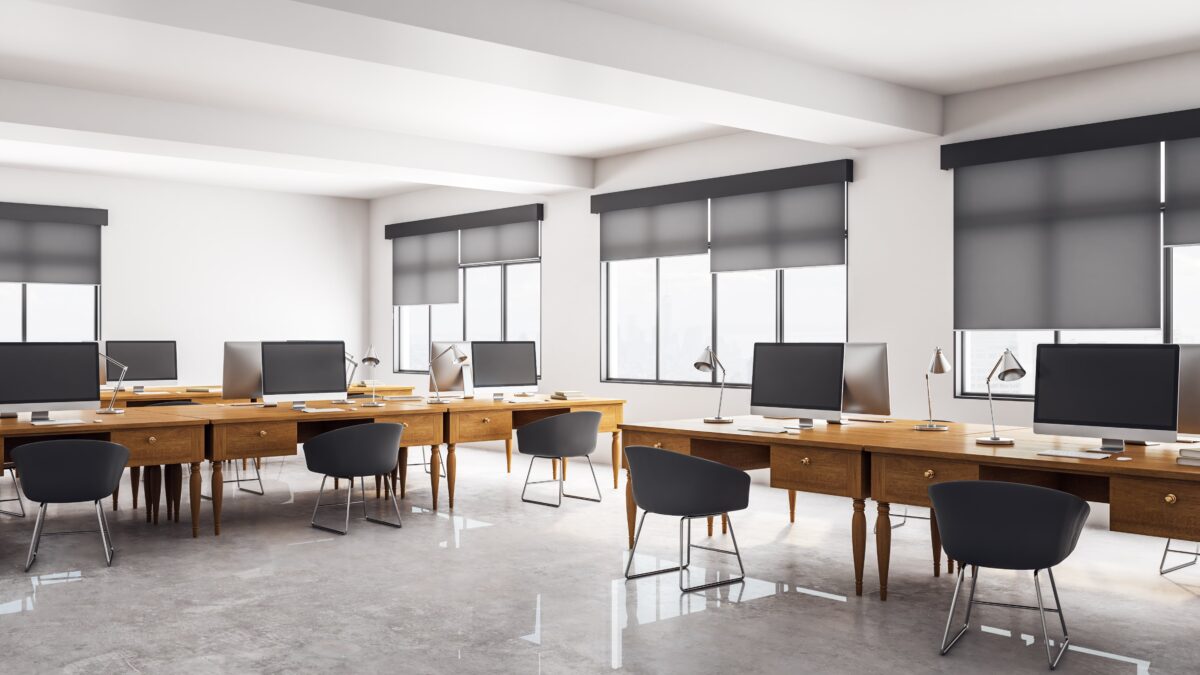Selecting window coverings for a business involves thoughtful considerations to align functionality, aesthetics, and practicality. When choosing your business’s interior, window coverings require strategic thought. From complying with building codes to ensuring energy efficiency, each decision impacts your workspace. In this post, we explore key considerations that go beyond aesthetics, helping you make informed choices for your business’s window treatments.
Commercial Building Codes:
When selecting window coverings for your business, adherence to commercial building codes is paramount. Ensure that the chosen window treatments comply with local regulations regarding fire safety, accessibility, and building aesthetics. Consult with professionals to determine the specific code requirements applicable to your business type and location.
Cleaning and Maintenance:
Consider the ease of cleaning and maintenance when choosing window coverings. Opt for materials and designs that align with your business’s cleaning routine and maintenance capabilities. Easy-to-clean options can contribute to a more hygienic and visually appealing environment, enhancing the overall ambiance of your business space.
Energy Efficiency:
Window coverings play a significant role in regulating energy efficiency within a commercial space. Choose treatments that provide insulation, helping to control heating and cooling costs. Energy-efficient window coverings contribute to a more comfortable working environment for employees and can lead to long-term cost savings for the business.
Automatic or Manual:
Decide whether automatic or manual window coverings suit the operational needs of your business. Automatic blinds or shades offer convenience and can be programmed to adjust based on time of day or external conditions. Manual options, on the other hand, may be more budget-friendly and suitable for spaces with simpler requirements.
Privacy and Security:
Balancing privacy and security is crucial when selecting window coverings for a business. Consider the nature of your business and the desired level of privacy for employees and customers. Additionally, assess the security features of different window treatments to deter potential intruders and safeguard your business assets.
Aesthetics and Brand Image:
Window coverings contribute to the overall aesthetics of your business space and play a role in shaping your brand image. Choose treatments that align with your brand colors, interior design, and the desired ambiance. Well-coordinated window coverings can enhance the professional look of your business and create a positive impression on customers.
Budget Considerations:
Establish a realistic budget for window coverings, considering both upfront costs and long-term value. Factor in installation expenses, maintenance costs, and potential energy savings when evaluating the overall budget. While cost-effectiveness is essential, prioritize quality and functionality to ensure the chosen window treatments meet the unique needs of your business.
Natural Light Management:
Evaluate the amount of natural light you want to allow into your business space. Different window coverings offer varying degrees of light control. Consider the positioning of windows, the orientation of your building, and the impact on indoor lighting when selecting treatments that align with your business’s natural light management goals.
Design Versatility for Changing Tenants:
Consider choosing window coverings with a versatile design that can adapt to various décor styles. In commercial spaces where tenants may change frequently, opting for neutral or timeless designs ensures that the window treatments remain appealing across different interior aesthetics. This design flexibility not only caters to the preferences of diverse tenants but also avoids the need for frequent replacements due to style mismatches. Neutral colors and classic patterns can seamlessly integrate with various design themes, offering a timeless and universally pleasing look.
Choosing window coverings for your business involves careful consideration of various factors, from building codes and energy efficiency to aesthetics and budget constraints. By addressing these key considerations, you can make informed decisions that enhance the functionality, comfort, and overall appeal of your business space.





